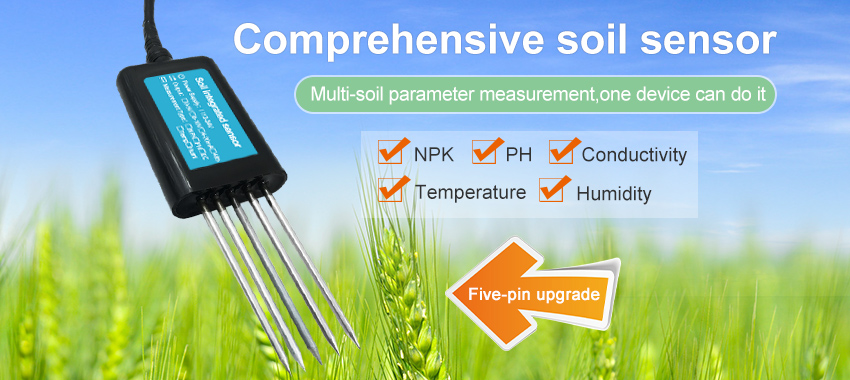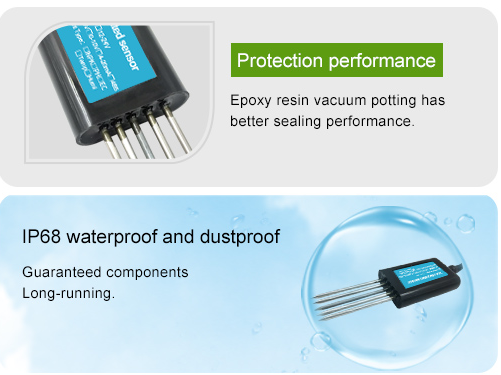Driven by technological advances, agriculture has undergone a major transformation. Soil nutrient sensor revolutionize agricultural practices. These cutting-edge devices enable farmers to efficiently monitor and manage nutrient levels in the soil, thereby increasing crop productivity and enabling sustainable agricultural practices. In this article, we will explore the significance of soil nutrient sensors in precision agriculture, their functions, benefits, and future implications for sustainable food production.

Understanding Soil Nutrients and their Importance in Agriculture
Soil nutrients are essential elements required for plant growth and development. These nutrients include macronutrients such as nitrogen, phosphorus, and potassium, as well as micronutrients like iron, zinc, and manganese. The availability of these nutrients in the soil directly influences the health, yield, and quality of crops. Traditionally, farmers relied on laboratory soil tests and visual assessments to determine soil nutrient levels. However, these methods were time-consuming, costly, and often provided limited spatial and temporal data.
The advent of soil nutrient sensors has transformed the way farmers monitor and manage soil fertility, providing them with real-time, site-specific information to make informed decisions for optimizing nutrient application and crop production.
Functionality of Soil Nutrient Sensors
Soil nutrient sensor are advanced electronic devices designed to measure the concentration of various nutrients in the soil. These sensors utilize different techniques to extract soil samples and analyze their nutrient content. Some sensors employ electrochemical methods, while others utilize optical or spectroscopic techniques to measure nutrient levels. The data collected by the sensors is typically transmitted wirelessly to a central monitoring system or a smartphone application, enabling farmers to access real-time information about their soil fertility.

In addition, soil nutrient sensors can be integrated with other sensors to measure soil moisture, pH, temperature for a comprehensive understanding of soil health. This multi-sensor approach provides a comprehensive understanding of soil nutrient dynamics, enabling farmers to optimize nutrient management.
Benefits of Soil Nutrient Sensors in Precision Agriculture
Integration of soil nutrient sensors in precision agriculture changes farming practices. Some of the key advantages include:

- Precision Nutrient Management: Soil nutrient sensors enable farmers to precisely monitor and manage the nutrient levels in their soil, allowing for targeted and customized nutrient applications based on the specific needs of the crops.
- Resource Optimization: By providing real-time data on soil nutrient levels, these sensors facilitate efficient use of fertilizers and other nutrient inputs, minimizing wastage and environmental impact.
- Improved Crop Performance: Maintaining optimal nutrient levels in the soil fosters better nutrient uptake by plants, leading to improved crop health, yield, and quality.
- Cost Savings: With the ability to make data-driven decisions, farmers can reduce input costs while improving land productivity.
- Environmental Sustainability: Soil nutrient sensors promote soil and water conservation by minimizing nutrient loss and reducing overuse of fertilizers.
Future Implications and Innovations
With the continuous progress of technology, the application of soil nutrient sensors in agriculture has broad prospects and deserves further innovation. Some potential developments on the horizon include:
- Integration with Precision Farming Systems: Soil nutrient sensor will join in intelligent agricultural system. They will work with other sensors, drones and satellite imagery to give farmers a holistic view of agricultural operations.
- Data Analytics and Artificial Intelligence: Data from soil nutrient sensors support analytics and machine learning algorithms for optimal nutrient management.
- Miniaturization and Affordability: Continued research leads to miniaturization of soil nutrient sensors, making them cheaper and thus democratizing precision agriculture.
- Nutrient-Specific Sensors: There is growing interest in sensors capable of high measurement of specific nutrients, enabling tailored nutrition management strategies.
- Remote Sensing and IoT Integration: Soil nutrient sensors will combine remote sensing technology and Internet of Things connectivity to achieve real-time monitoring of soil nutrients.
conclusion
Soil nutrient sensors have become a transformative technology in modern agriculture. Empower farmers with the tools to make informed decisions through data to achieve sustainable agriculture. Sensors and precision farming systems continue to integrate, and they will play a key role in improving agricultural production efficiency. With the continuous adoption and advancement of soil nutrient sensors, the agricultural landscape is ready for transformation.